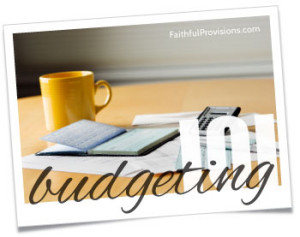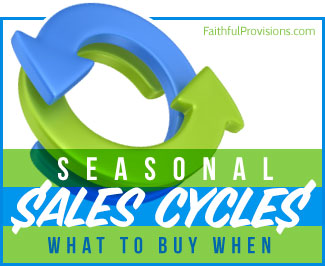
For more budgeting articles in this series, click HERE.
Budgeting Step Seven: Getting Rid of Debt
Guess what? Debt is not inevitable. It’s not just “part of life.” In fact, part of budgeting well is getting rid of debt. I want to share with you my experience in getting out of debt and enjoying the freedom that comes with that. You can’t imagine how it feels to have that burden rolled off your shoulders. It is worth all the extra work you have to do to dig your way out of debt.
:: Learn more about Budgeting and Saving Money HERE.
How to Get Rid of Debt
For us, learning how to get rid of debt was figuring out where to start. Here are the first two steps:
- List all your monthly expenses
- On a separate sheet of paper, list your debts with this information:
- Bank/Store card name
- Amount owed
- Interest rate
- Minimum payment
The Best Way to Get Rid of Debt
My husband and I were enrolled in Dave Ramsey’s Financial Peace University when we learned one of the best ways to get rid of debt. That was where we first took a long hard look at our debt. After we had figured out the total amount that we owed our creditors, we used the Dave Ramsey “Debt Snowball” method. This is a way of tackling and getting rid of debt that really makes sense.
Using the debt snowball, you will begin tackling the smallest balances owed. So, while you are paying the minimum on all your bills, you put as much as you can toward eliminating the smallest balance owed. Once that is paid off, you will begin to feel a sense of accomplishment and motivation. Now, you roll whatever you were paying on the smallest balance to the next smallest balance. Adding that payment to your minimum, you will begin tackling it with every bit of extra that you’ve got! Once that is paid off, you will continue on, piling the payments together to pay off your bills from smallest largest, one at a time.
Give to everyone what you owe them: Pay your taxes and government fees to those who collect them, and give respect and honor to those who are in authority. (Romans 13:7)
ACTION STEP: This debt snowball method has worked for thousands of people, enabling them to eliminate their debt. Assemble your bills and follow the two steps listed above. Make your debt snowball list and post it somewhere that you and spouse can be reminded of your financial goals. Start tackling your debts and watch them melt away!
Once you begin your debt snowball, you are ready to move on to Step Six: College Savings Plans and Retirement Accounts.
What have you done to get out of debt? If you have a story that will encourage others, or if you need some encouragement yourself, please feel free to share here.
If you are viewing this in a reader or via email, click here for this post’s comments.




Greetings and thank you for the huge encouragement you are and the gifts that the Lord has provided you.
I have a question wrt 401K and debt:
I am putting money into my 401k at a rate of 8%. I have a modest amount in the account currently. I a specific debt load which could not be covered by the 401k savings. Nevertheless, does it make sense to stop contributing to the 410k and burn the debt down or continue both (paying off via snowball and saving)? More precisely does it make sense to withdraw the 401k savings, pay the penalty, and apply it to the debt and continue to pay it down?
Concern: I am 9 year out from retiring, past poor spending/savings habits have caused depletion and retirement looms.
Your prayerful response is much appreciated. Many blessings.
Rich, I would encourage you to go through Dave Ramsey’s site and contact one of his recommended debt counselors for the answer to your question. I know they will be able to help you!